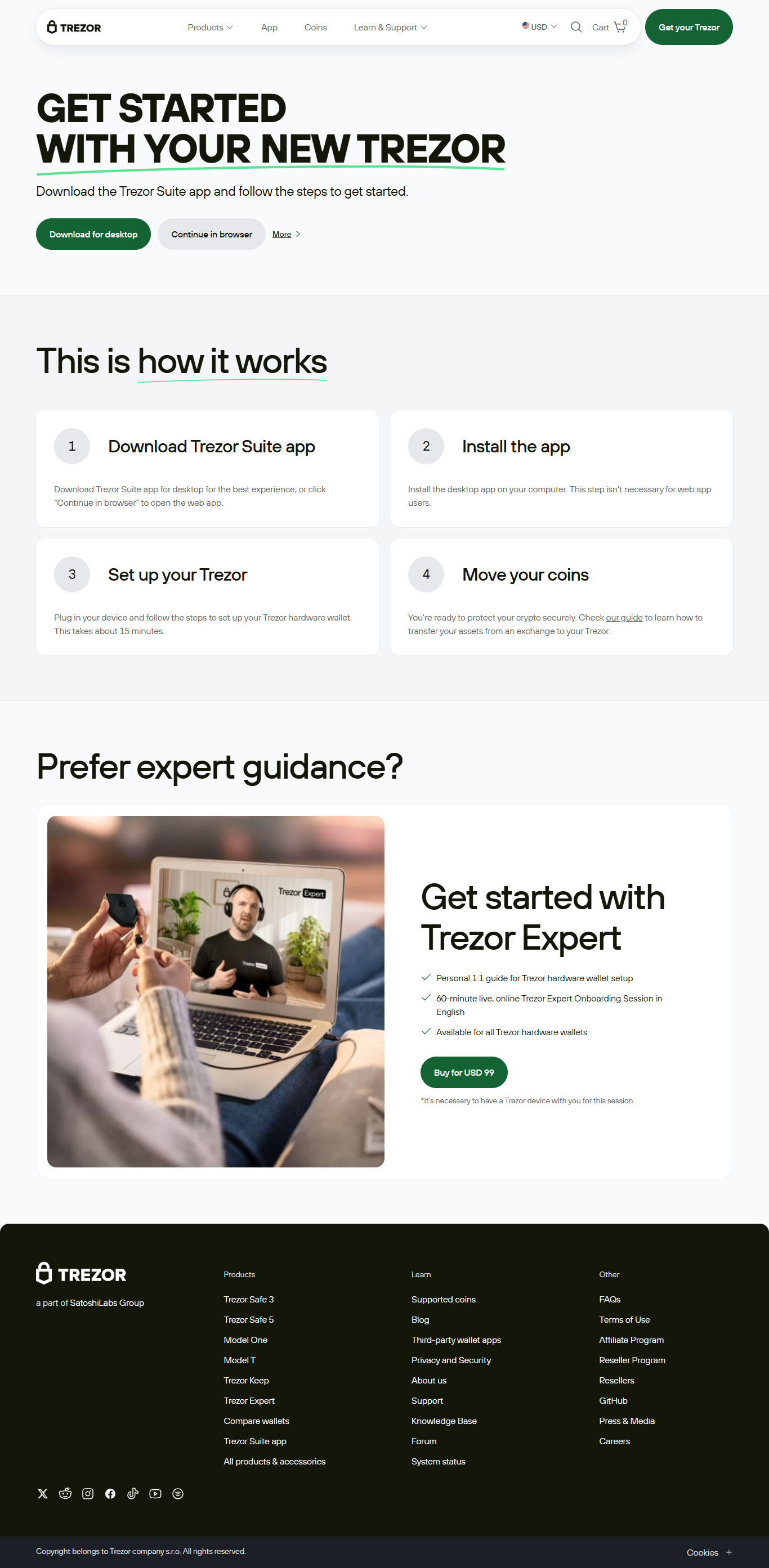Tŕezor™ Bŕridgeʬ | Securing℗ Your Digital Assets©
A practical 1,200-word overview that explains what Trezor Bridge is, how it works with Trezor hardware wallets, why it matters for your crypto security, and step-by-step setup tips and troubleshooting advice.
Get started — setup guideWhat is Trezor Bridge and why it matters
Trezor Bridge is a small, locally running background application that enables secure, browser-based communication between your computer and a Trezor hardware wallet. Unlike browser extensions that are sandboxed or web-only solutions, Bridge creates a controlled channel so the official Trezor web apps (and certain desktop apps) can detect and talk to your hardware device safely. For users, that means a smoother experience when managing keys, signing transactions, and interacting with decentralized applications — without exposing private keys to the web.
How Trezor Bridge works — the essentials
At a high level, the Bridge acts as a local intermediary. When you plug in your Trezor device, the Bridge listens for USB connections and exposes a secure local API (only to your machine). The Trezor web client connects to this local API over well-defined endpoints — the device prompts remain on the hardware screen and sensitive operations (like private key signing) always happen on the device itself. Because Bridge runs locally, websites never receive private key material; they only get signed responses after you confirm actions on the Trezor.
- Local-only: Bridge communicates inside your own computer — external servers do not get direct access to the hardware.
- Hardware confirmation: All critical approvals are performed on the physical device screen and buttons.
- Compatibility: Bridge supports multiple browsers and operating systems while isolating the cryptographic operations to the Trezor unit.
Security benefits — why you should use a hardware wallet + Bridge
Using a Trezor device in combination with Bridge drastically reduces attack surface compared to custodial solutions or mobile hot wallets. Attackers who compromise your PC or browser cannot extract private keys from the hardware wallet. Instead they may attempt to trick you into approving a transaction; this is why Bridge's UX + device display are critical — you always verify addresses and amounts on the Trezor itself.
- Seed protection: Recovery seeds never leave the device during normal operations.
- Phishing resistance: Confirmations on the hardware screen prevent invisible transaction tampering.
- Recoverability: If the hardware is lost, your seed (kept offline) allows safe recovery.
Quick setup — Installing Trezor Bridge & getting started
1) Download Bridge from the official Trezor website or follow the “Get started” sequence. Always verify you downloaded from trezor.io to avoid tampered copies.
2) Install and run the Bridge installer — it will create a local background service. On first run, allow the app any OS prompts for USB access.
3) Open the official Trezor web app or the recommended desktop client. The site will detect the Bridge and prompt you to connect your Trezor device. Plug in your device and follow on-screen + on-device prompts.
4) Create or restore your wallet using the device. Never enter your seed into a website or a file — always use the Trezor hardware for seed generation and confirmations.
Best practices for maximum safety
- Keep your recovery seed offline, written on paper or a metal backup — never store it digitally.
- Verify website URLs and bookmarks before connecting your device; use official links or saved bookmarks.
- Always confirm transaction details on the device screen — never rely solely on the web UI.
- Update firmware only from the official Trezor app; read release notes and verify authenticity.
- Use a dedicated machine for large-value operations when possible, and enable passphrase protection for additional account segregation.
Common issues & troubleshooting
Device not detected: Ensure Bridge is running and allowed by your OS firewall. Try a different USB cable, port, or restart the Bridge service. For modern browsers that block mixed content, allow the page to use the local host endpoint if prompted.
Browser compatibility: If a browser blocks Bridge, try another supported browser (Chrome, Edge, Firefox) or use the desktop app. Avoid third-party extensions that may interfere with USB access.
Firmware update failed: Do not disconnect during update. If stuck, follow official recovery instructions from Trezor support.
Short FAQ
- Is Bridge safe? Yes — it’s a local helper. The device enforces cryptographic security.
- Can websites read my seed? No — seeds never leave the hardware during normal use.
- Should I trust third-party wallets? Use well-reviewed wallets that support Trezor and always verify transaction details on your device.
Wrap-up — secure, simple, and controlled
Trezor Bridge brings the convenience of browser-based interfaces together with the security of hardware key storage. For anyone serious about protecting digital assets, pairing a Trezor hardware wallet with the official Bridge and web client is a strong baseline: the private keys remain isolated, confirmations stay on the device, and the user keeps control. Follow the setup steps, adhere to the best practices above, and treat your recovery seed like the ultimate master key — offline, private, and backed up.
Note: Always prefer official downloads and support channels for any firmware or Bridge installers. If in doubt, consult Trezor’s official documentation or community resources.
